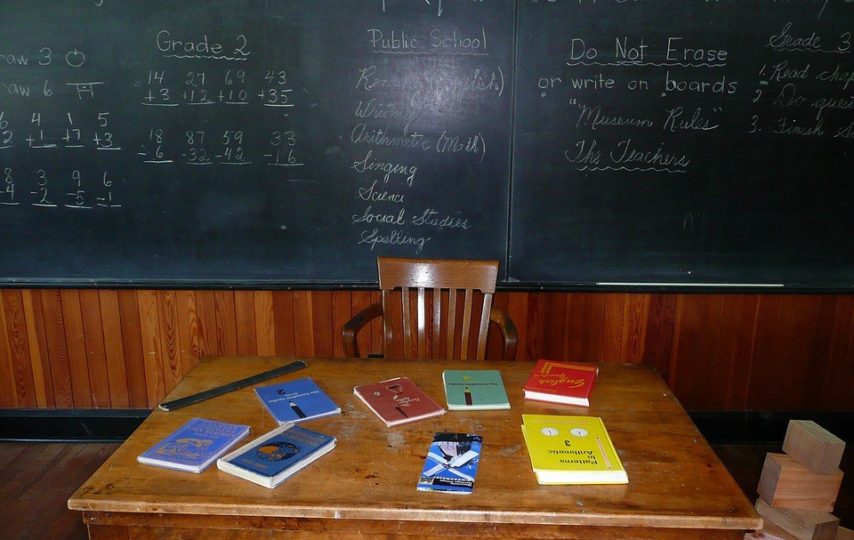Have you been teaching lately? Do you like working with children? Undoubtedly, teaching is amongst the most rewarding jobs. It allows you to share knowledge, create awareness, and open doors of success for the upcoming generation. You might enjoy being a teacher and schooling children. Still, you can’t resist the urge to grow and climb up the professional ladder. And advancing to an administrative position seems like an excellent step for a well-accomplished teacher.
After a successful career in education, rooting for the school’s principal position could be a perfect choice. You would nurture students, devise a curriculum with evolving industry trends, and inspire educators to make a difference in students’ life. More than delegating tasks, you would create an environment that fosters teacher and student growth. After all, the future of the nation will be in your hands. Are you ready to sail the ship?
However, there is no one-size-fits-all style when it comes to becoming a principal. You have to take different paths to satisfy the demands of this role. Thus, you will find yourself training the teachers, while at times, you would be outlining course structures and academic goals. Despite challenges a principal might face, he/she stays committed to advancing learning for their learners. If you envision yourself being a part of this mission, let us help you create a vibrant learning community.
Here we are listing the roles and responsibilities of a school principal.
1. Strategizes Vision for Academic Success
In today’s dynamic world, the educational sector must move with emerging market trends. It means the curriculum has to go beyond rote learning and testing students’ retention skills. As a school principal, you would take responsibility for strategizing a vision for academic success. It includes new educational programs, comprehensive learning outcomes, and more emphasis on extracurricular activities.
Likewise, you have to close achievement gaps and come up with solutions to ensure academic success. You can put more weight on learning than results to motivate and encourage students to perform better. Conversely, if you still don’t know how to become a school principal, considering learning the ropes. You can pursue a degree in education leadership to equip yourself with strategic leadership skills and thrive in the educational sector.
2. Promotes A Conducive to Learning Environment
Since principals work at the administrative end in schools, they have to create a learning-friendly environment. It doesn’t mean you have cut back on daily activities, sports, or extracurricular but rather maintain a balance. After all, a healthy and productive environment is where students are learning happily. Here are some tips for creating a conducive to learning classroom environment.
- Physical Space: Surprisingly, physical surroundings have a substantial impact on learning. Therefore, use every area of the classroom to create an environment that encourages learning. You can make amendments to the layout, rearrange desks, or bring digital media in classrooms.
- Classroom Culture: Previously, teachers were the primary communicators in classrooms, but not anymore. Education encourages two-way communication, where students can put forward their narratives and ask questions. Thus, incite students to interact and contribute to classroom discussions within disciplinary measures.
- Build A Sense of Community: Principals have to support learning in friendly environments. So, not include parent engagement programs? You can conduct parent-teacher meetings to throw light on their child’s progress and academic performance.
3. Cultivating Leadership Skills
Can you call yourself a leader? A school principal should be able to act as an efficient leader. Depending on specific needs, you should know how to lead students, teachers, and parents confidently. You have to endeavor to improve the operating effectiveness of schools continually. Firstly, begin by filling in the blind spots. Identify gaps where teachers need help and empower them with knowledge, passion, and expertise. In addition to boosting morale, it would encourage teachers to consider leadership opportunities.
Moreover, share your administrative responsibilities with teachers to spend more time in classrooms. You can observe teaching styles and provide valuable feedback so that teachers can grow and polish their skills. These leadership skills strengthen working relationships amongst staff while improving students’ learning outcomes.
4. Fosters Development Programs
As a principal, your goal is to offer students the optimal education, but you can’t do this single-handedly. In addition to improving learning outcomes, you have to provide growth opportunities to school educators. Therefore, create development programs and promote professional growth through in-service training and personal contact. You can make them attend international workshops, teaching conferences, or other digital training programs.
Otherwise, you can lead by setting an example. Guide teachers in their classrooms through proper demonstration to help them learn new things. For instance, if you are integrating digital boards and keypads, help teachers get used to technology.
5. Administers Health & Safety in School
With the increasing outspread of diseases, health should be the principal’s utmost priority. You have to take all reasonable precautions to eliminate hazards and safeguard the entire school staff’s health. In addition to focusing on cleanliness, prepare everyone for unfortunate circumstances. You can practice fire drills so that students know what to do in such emergencies. Likewise, principals establish procedures to limit the access of visitors to the school.
They also inspect the school grounds and building to ensure it is free from hazards that might cause accidents. Besides this, principals supervise patrols and ensure all first-aid supplies and treatment are available for students readily. After all, injuries are quite common in schools. However, you also have to establish adequate controls to regulate the use of medication and painkillers by students.
6. Fosters Relations with Outside World
While managing a school’s internal operations, the principal is also responsible for connecting the school with the outside world. You have to join hands with other local schools to conduct intra-school sports competition or debate challenges. It gives students more exposure while helping teachers learn from their fellows. Similarly, you have to stay in touch with the government to secure students’ financial aid and create equal learning opportunities.
You can also materialize educational policies and programs with public educators to design a more competent curriculum for students. Moreover, principals establish a link between school and community people to teach students the importance of giving back to society. You can initiate volunteer programs, plantation drives, or community service opportunities.
Wrapping Up
Believe it or not, but effective leadership can make an organization and institute thrive. The same goes for schools; having a competent principal can brighten up students’ future. An efficient principal knows how to maintain a balance with all his/her roles and duties. They create a pleasant learning environment, devise policies to ensure academic success, and motivate teachers to grow. At the same time, they also handle administrative duties such as coordinating tasks, maintaining external relationships, etc.



